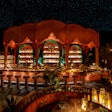
Comic-Con International had, perhaps appropriately, underground beginnings. Its first gathering dedicated to comic books and other popular art took place in 1970 in the basement of San Diego’s U.S. Grant Hotel and hosted 300 attendees. Now, the event includes more than 350 hours of seminars, workshops, and panel discussions, and is the largest of its kind, welcoming more than 125,000 this past July. And those are just the hard-core Watchmen and Stan Lee fans. Major movie and television studios have also jumped on the Comic-Con bandwagon in recent years, with Warner Bros., Universal, ABC, and NBC sponsoring and holding events. Coverage of this formerly fringe event by mainstream press such as The New York Times and CNN has now become de rigueur. Executive director Fae Desmond oversees a board of 13 people, which in turn manages about 80 department heads and committee members. The mission of promoting comic books and other popular art to a wider audience guides most decisions, which are generally made by consensus.
Holy Growth, Batman!
The event has moved numerous times to accommodate its growing attendance. Key to its broadening appeal was a strategy of developing ads that spoke to multiple audiences. “When we first started, our ads were specifically geared to genre audiences, and that had the potential of ignoring a wider audience, who just needed to be exposed to it,” says director of marketing and public relations David Glanzer. The organization developed more universal ads—ones that could appeal to, say, both comic-book and sci-fi fans—and the result was the ability to run a single ad that grabbed the attention of more potential attendees. (For example, an early TV ad featured a man dressed as Thor talking about the event; a later commercial found a man wearing a shirt and tie in a comic-book store, surrounded by movie posters and toys.)
Hooray for Hollywood?
If there was any doubt that Comic-Con is now mainstream, Paris Hilton’s appearance at 2008’s gathering to promote Repo! The Genetic Opera eliminated it. This year’s con also drew Keanu Reeves, Hayden Panettiere, Samuel L. Jackson, and Jennifer Connelly, as well as a preview of Sony’s film Pineapple Express. (The boys of HBO’s Entourage even paid a visit last season; Glanzer and staff consulted on how to re-create the convention for the small screen.) The show has grown so big that it faces accusations of selling out or pandering to film and television studios; Glanzer notes that the nonprofit has a long tradition of including movies and TV shows in the convention, having staged its first film festival in 1976, long before megamarketing existed. And besides: “For us, the big celebrities are the people who draw and write the comics,” he says. “Matt Groening is just as much a celebrity on the floor as any A-list movie star.”
Home Town Advantage
Glanzer admits that the convention’s burgeoning size introduces more than a few challenges, including space issues. Recent efforts to expand its footprint include erecting tents outside the venue, the San Diego Convention Center, and holding additional events in hotel meeting rooms off site. Glanzer acknowledges that the event’s continual expansion raises the question of whether Comic-Con should relocate to a market that could better accommodate it. “We’re all from here. It’s a beautiful city and a great vacation destination,” he says. “No one wants to move.”



















